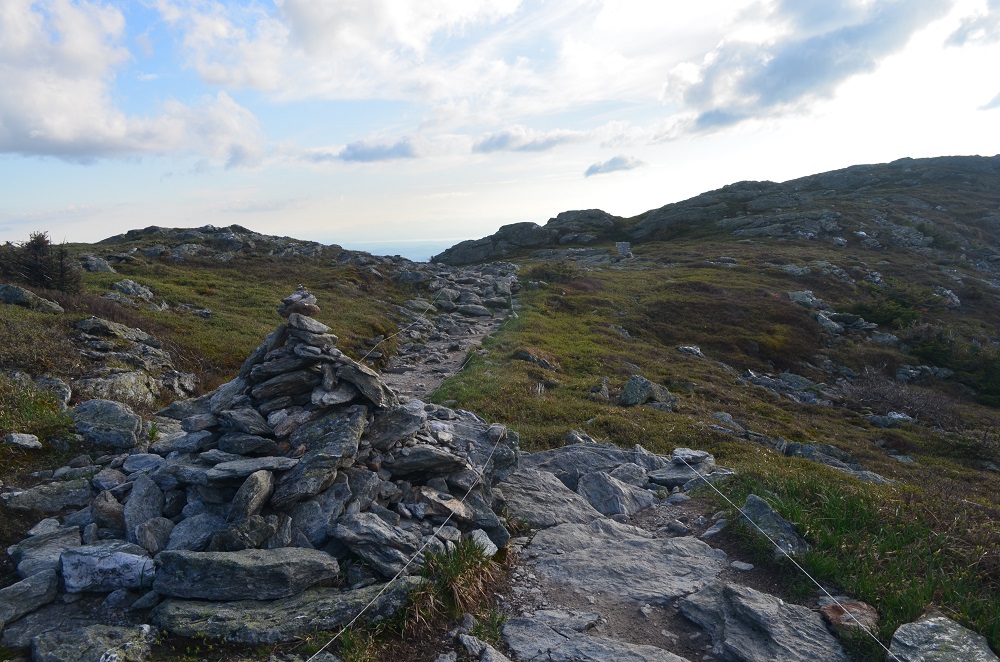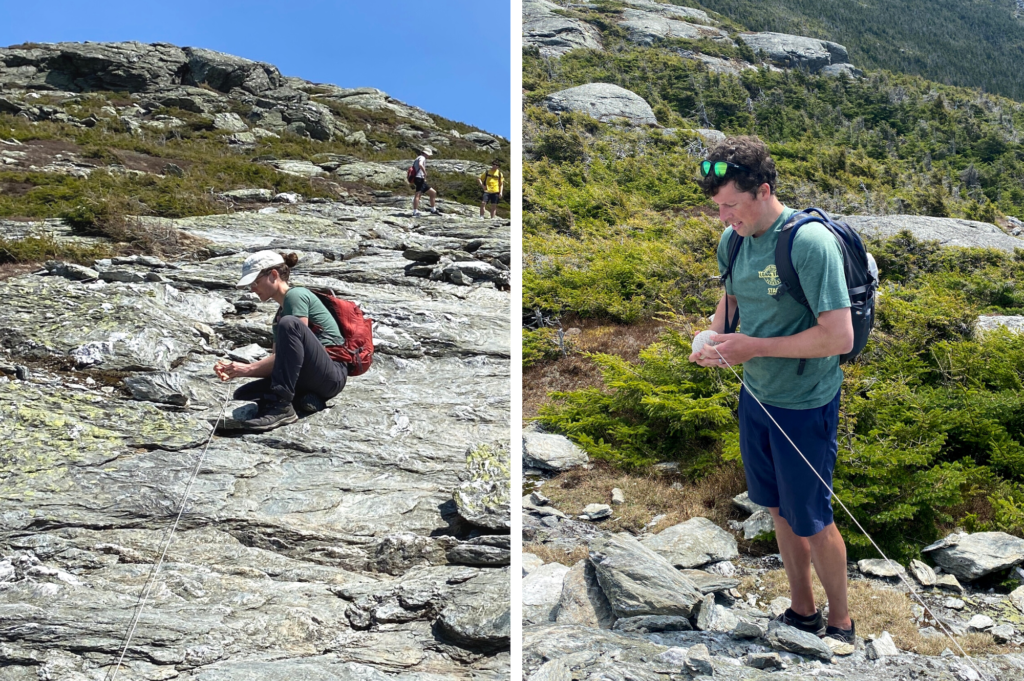
What’s that String?
If you’ve hiked Camel’s Hump, Mount Mansfield or Mount Abraham, you’ve seen low-lying white string delineating trails above treeline. Yes, it helps hikers find their way on exposed bedrock. But more importantly, it protects the fragile plants that grow only on the approximately 200 acres of Vermont’s alpine zones.
These plants survive difficult conditions on the thin soil of the cold, wind-blown summits of Vermont’s 4,000-footers, and even thrive there. But they can’t take trampling by hikers and dogs.
Of course, it’s convenient to step off trail to snap a picture or have a snack. And you may think you’re settling down in a soft patch of grass. But that’s actually Bigelow’s sedge, extremely rare in Vermont, and heedless hikers are one of its biggest threats. Other rare and beautiful alpine flora include diapensia, alpine sandwort, and bearberry willow, and that’s just the beginning of a long list.
So before hiking season officially started on Memorial Day Weekend, GMC staff members set out to “string the trail” on popular hiking routes in the alpine zone. On May 13 this year, we closed our laptops for a day, met the new lead caretakers, and spent an 80-degree day stringing the Sunset Ridge Trail. We pulled weathered and misplaced string from years past, and delineated a five- to ten-foot corridor for the mile from treeline to the Long Trail. We tried to provide hikers a variety of options on steep sections and for breaks, while still protecting patches of alpine vegetation.

Stringing is a great pre-season tradition for our staff, especially since many of us are still working from home. We get to hang out with coworkers, learn about alpine ecology from GMC Field Supervisor Nigel Bates and Lead Caretaker Kate Songer, and prepare the trail for hiking season.
How to Protect Alpine Plants
Next time you’re in the alpine zone, note the string, and ensure you’re doing your part to remain on the trail and off the plants. Please remember these tips:
- Do the “rock walk.” Remain on durable surfaces within the marked boundaries. If you do encounter vegetation on the trail, try to step over or around it.
- Leash your dogs. Well-behaved dogs are welcome on the Long Trail System. However, they can’t recognize fragile vegetation, so they must remain leashed and close to your side in the alpine zone.
- Please do not move rocks to build “cairns” or other structures. Rocks help secure the limited soil of the alpine zone, which plants need to take root.
- Do not camp or build campfires in the alpine zone.
This article originally appeared in the Summer 2022 edition of the Long Trail News under the title, “What’s that String?”



















Leave a Reply